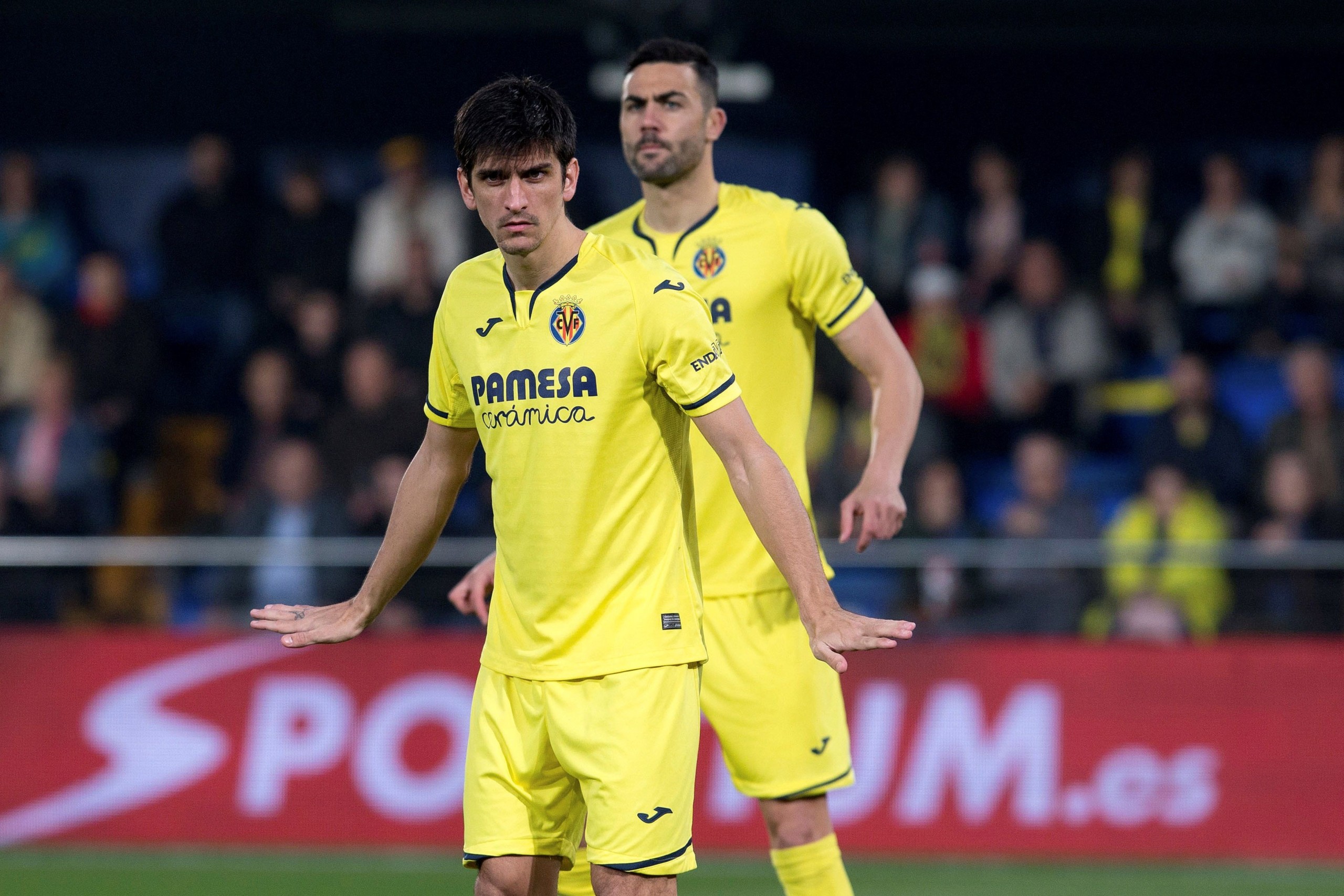Villarreal’s topsy-turvy season, Suso at Sevilla, Barcelona’s unique short goal kicks, and Messi’s scoreless streak. It’s all here in this week’s roundup of the action in La Liga.
Villarreal’s inconsistent campaign
Villarreal are having a strange season. They’ve had top-six underlying numbers since the early running but only as of this week held a position inside the top six. With penalties removed from the equation, their goal and expected goal differences match up almost exactly, but the relationship between them has been far from linear.
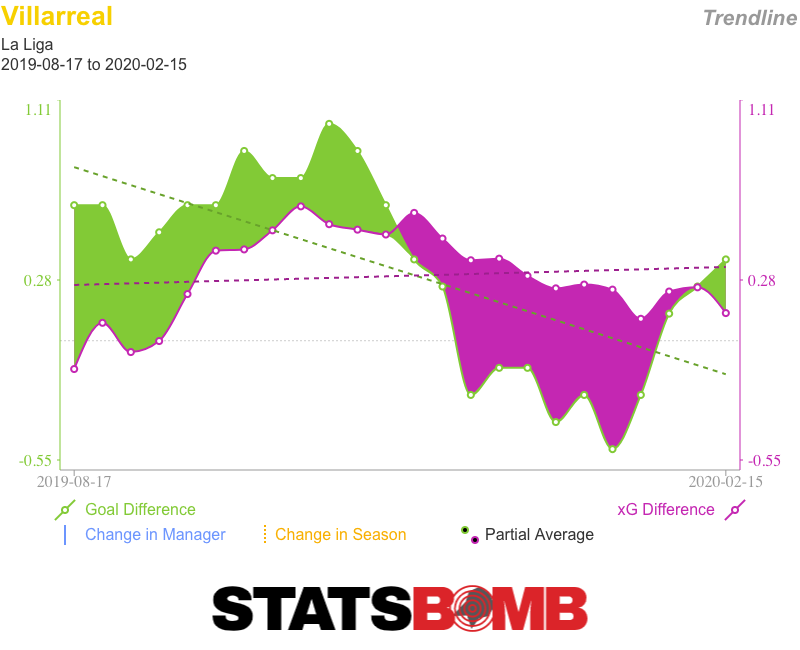
Javi Calleja’s side are in the midst of their best run of form of the season. Saturday’s 2–1 win over Levante was their sixth in their last eight matches. But this is actually their second-worst eight-match streak in terms of xG difference. Their best, between matchdays two and nine, yielded six fewer points. They seem to be getting results on the board despite worsening, yet still good, underlying numbers.
They’ve also made some fairly dramatic changes to their approach as the campaign has gone on. As these comparison radars between their first and second 12 matches show, they’ve become more direct in the way in which they get the ball forward, are entering the box via crosses more often than before and have upped their shot count at the expense of overall quality, albeit while creating a greater number of clear shots (through one-on-ones with the goalkeeper).
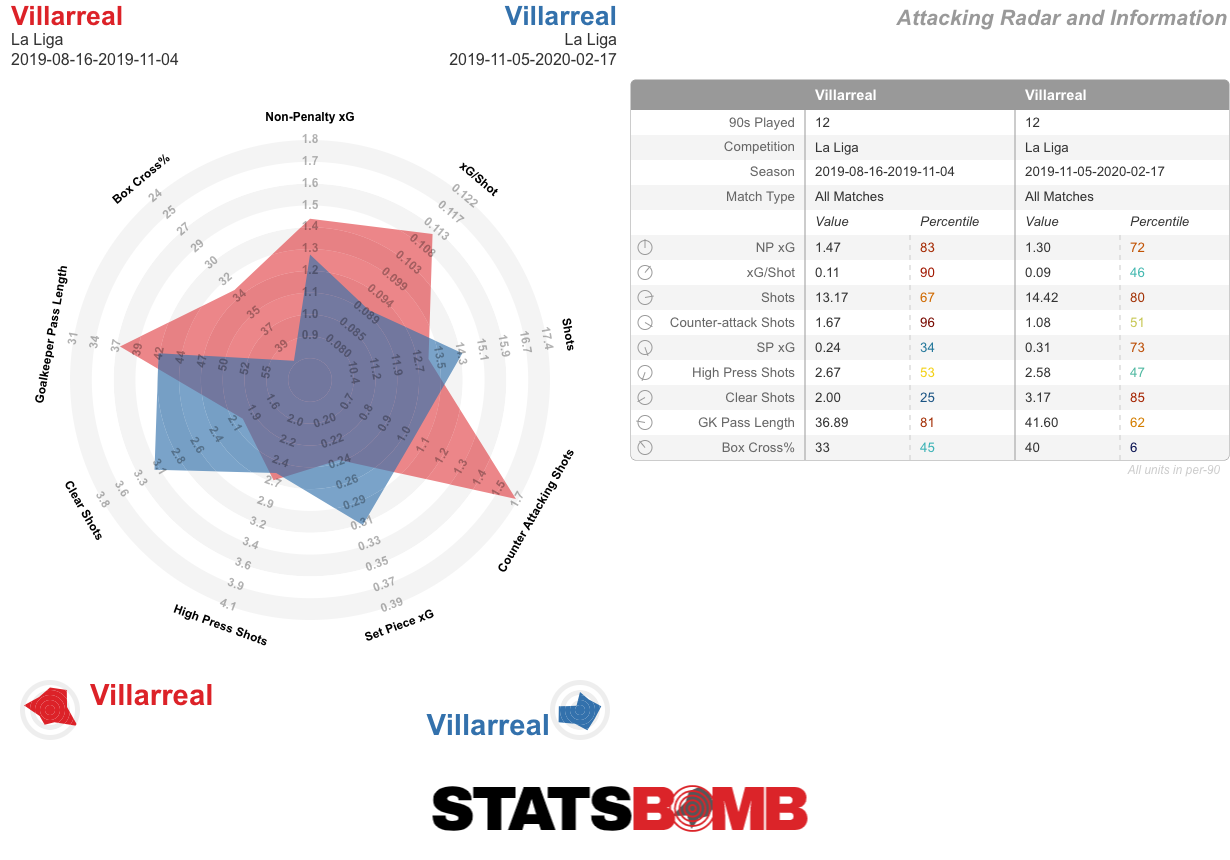
On the defensive side, they’ve become demonstrably more aggressive, pushing their back line up, more regularly contesting possession and becoming less easy to get off shots against in transition. Lower shot volume is offset by increased quality.
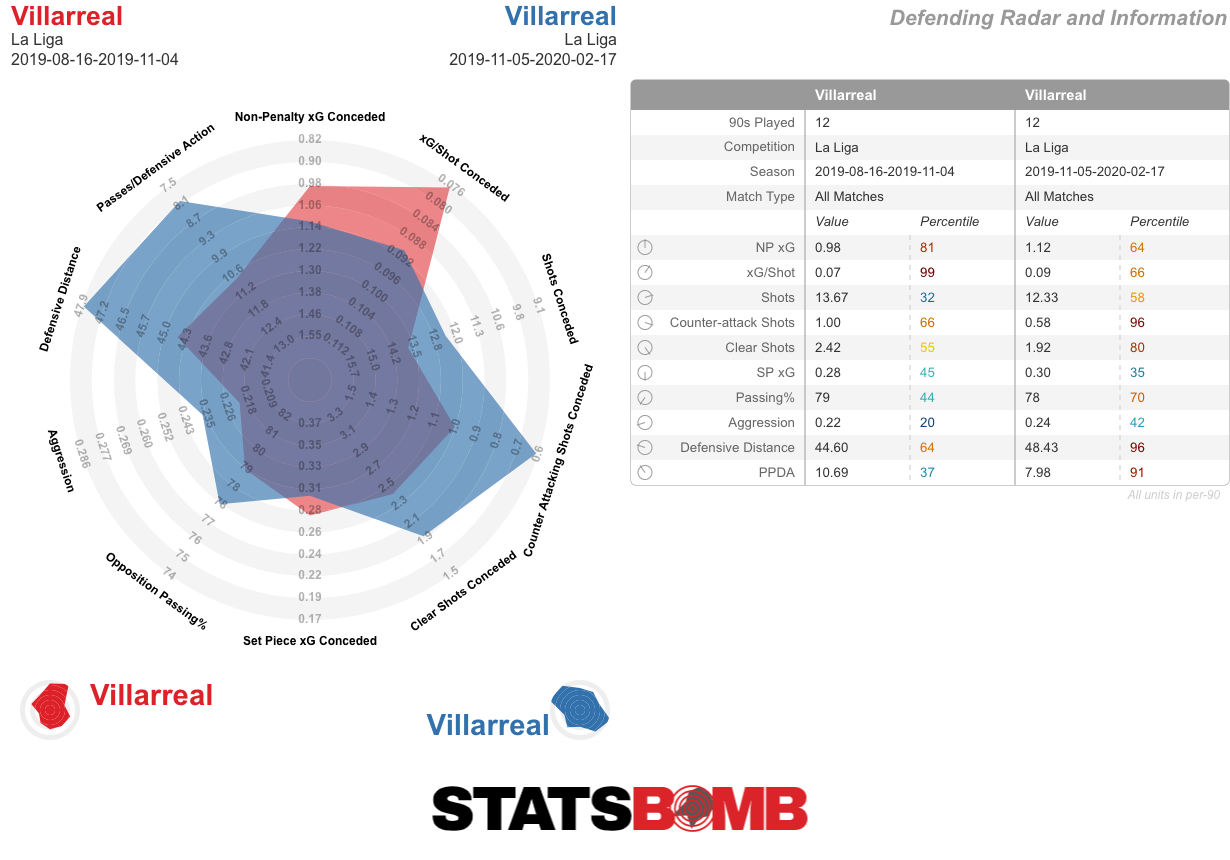
Villarreal are slightly worse off at both ends of the pitch compared to their first 12 matches, but maybe there is something in this adjusted style that is more conducive to getting results on a match-by-match basis? Or maybe they are just enjoying a bit of good fortune?
Yet the distribution of penalties for and against has played a fairly significant role. During the first couple of months of the campaign, they twice dominated away matches only to come away pointless after conceding two penalties on each occasion in defeats to Levante and Mallorca. Their current eight-match run has included three penalties scored and none conceded.
It's unclear how this will ultimately shake out. Villarreal could finish anywhere between third and eighth and any of those outcomes wouldn't feel particularly surprising. Sunday’s match away to Atlético Madrid might just go a fair way toward calibrating their possibilities.
Can Suso reignite stuttering Sevilla?
The race for the top four has tightened considerably over the course of the last 10 matches, with Getafe in third and Real Sociedad in eighth separated by just five points. Sevilla are one of the losers. After taking 1.93 points per match from their first 14 fixtures, they're at just 1.3 per match thereafter, the ninth-best record in the league for that time. Two weeks ago, they lost the top four place they’d held since mid-November.
This despite the fact there's been no material difference in their performances. Their average goal and xG differences remain fairly steady. It’s just that the distribution of those goals now more often results in draws and defeats.
It is the sort of thing likely to right itself. Sevilla are, after all, running about five goals behind expectation. But with their advantage eroded, and other comparably good teams now surrounding them, they can’t afford to just sit around and wait.
Sevilla have suffered from a relative lack of firepower all season. Julen Lopetegui has often been quick to make changes to shore things up once they have the advantage, aware that further goals might not necessarily arrive.
This is the situation the club sought to rectify in January. They first added a quick and direct threat to their attack with the €20 million signing of Youssef En-Nesyri from Leganés. Then, at the end of the window, they committed a further €20 million to the eventual purchase of Suso at the end of his 18-month loan from Milan.
Suso made his second start in Sunday’s 2–2 draw at home to Espanyol and showed off the skills he brings to the side. Swift and creative, he looks a player capable of returning some of the spark Sevilla lost when Pablo Sarabia left for Paris Saint-Germain last summer.
By his own standards, the 26-year-old wasn’t having the best of seasons at Milan.
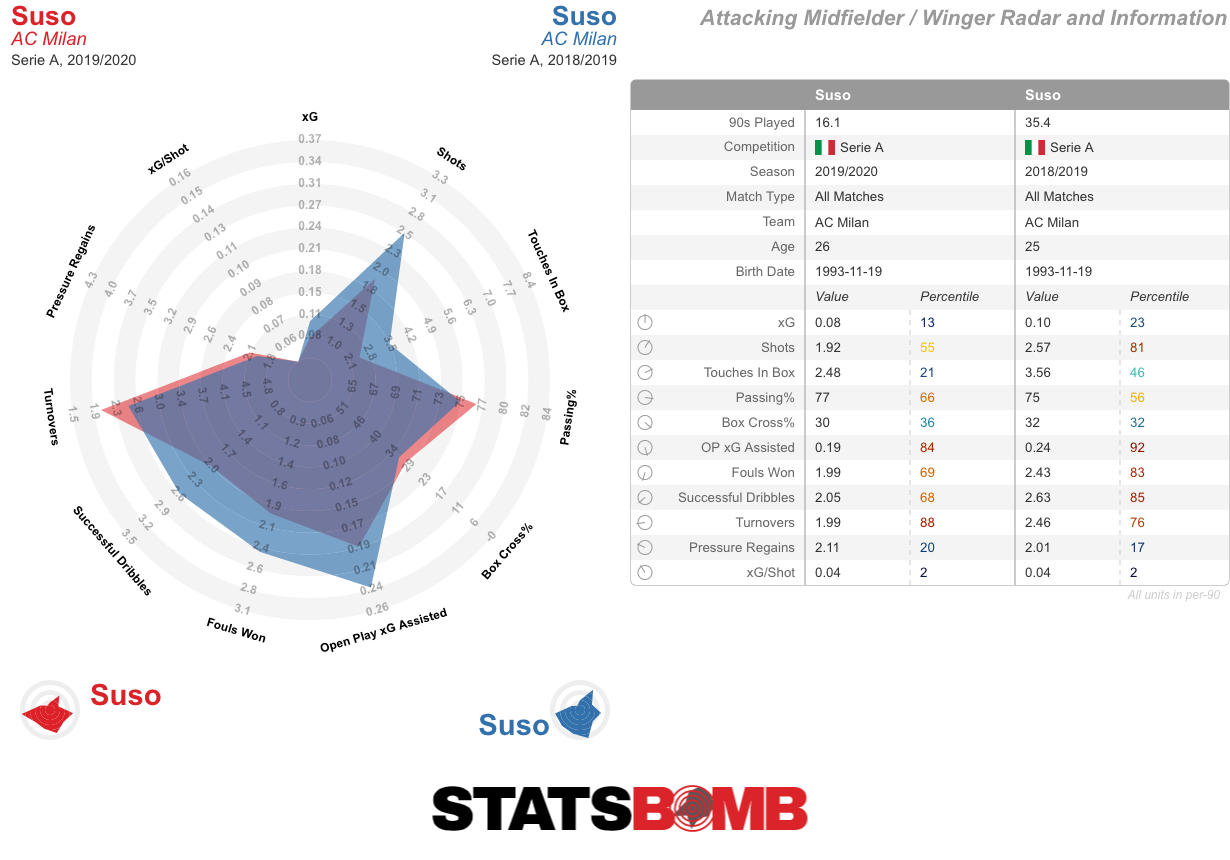
But he still comfortably led Serie A in open play passes into the box. That ability to find teammates in advantageous positions was on clear display on Sunday. Suso provided the assist for the first goal, headed home by Lucas Ocampos, and slipped two nice passes into the area for En-Nesyri to get off shots. All in all, he successfully moved the ball into the area on six occasions.
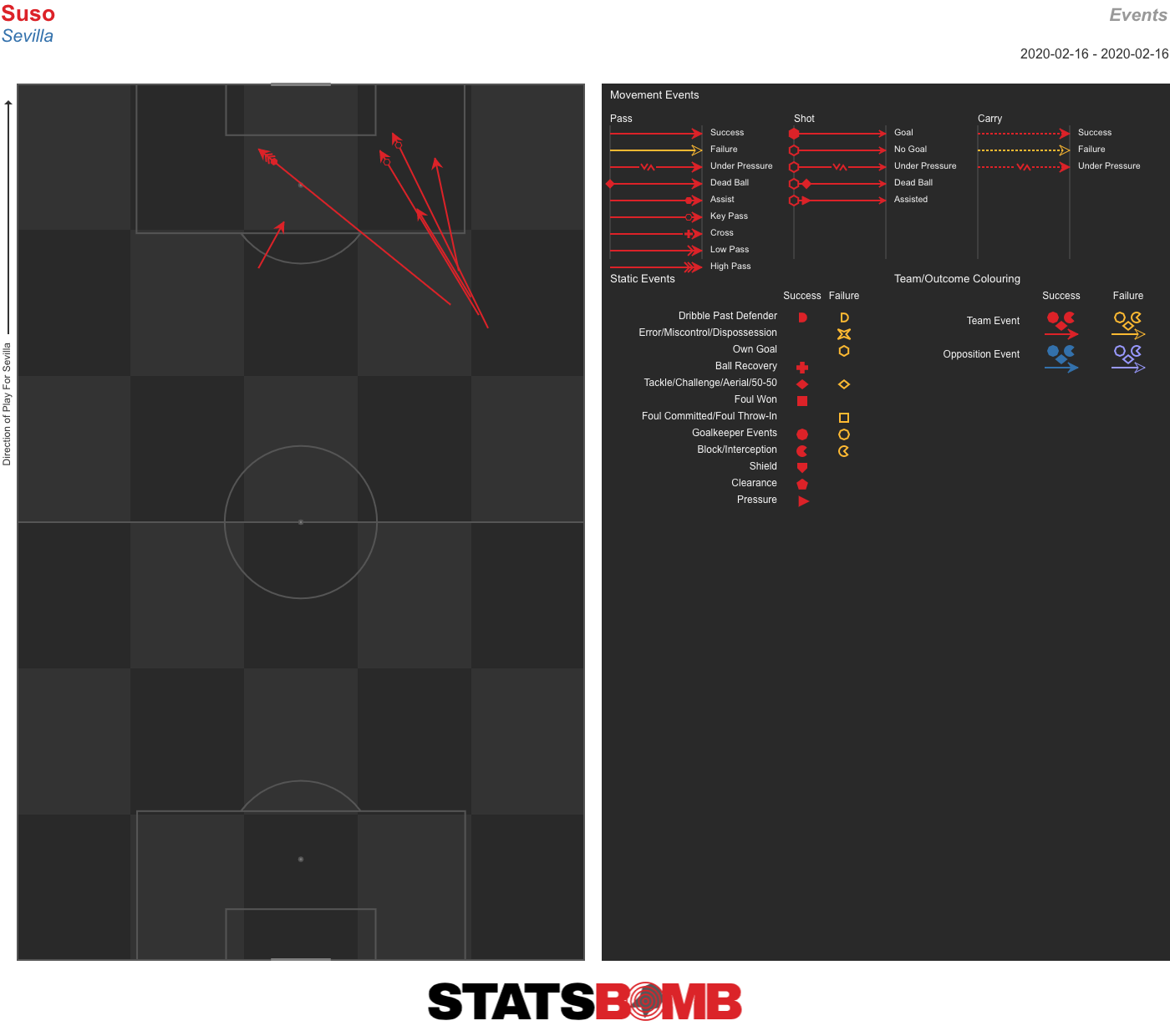
And just as Sevilla seemed likely to come away with nothing, Suso produced his trademark strike, stepping it off the right onto his favoured left foot and firing a low effort into the corner from the edge of the area.
No side in La Liga have been as reliant on crosses as a means of creating shots as Sevilla are this season, and Suso provides a pair of headline attributes that will help vary that. He also gives a more natural and symmetrical shape to their attack, with both him and Ocampos (now on the left) moving infield onto their favoured side to get off shots and provide space for the two full-backs, so important as attacking outlets in Lopetegui’s system, to advance outside.
But will it be enough to get Sevilla back into the Champions League places?
Barcelona’s short goal kicks, and Messi’s goal drought
Two minutes into Barcelona’s 2–1 win at home to Getafe on Saturday, central defender Samuel Umtiti pushed the ball into place before playing a short goal kick to his goalkeeper Marc-André ter Stegen. He, in turn, took four touches forward before pinging a low pass through the centre of the pitch to Antoine Griezmann.
It was the first of six goal kicks taken that way, from central defender to goalkeeper, during the match — three by Umtiti, three by Gerard Piqué.
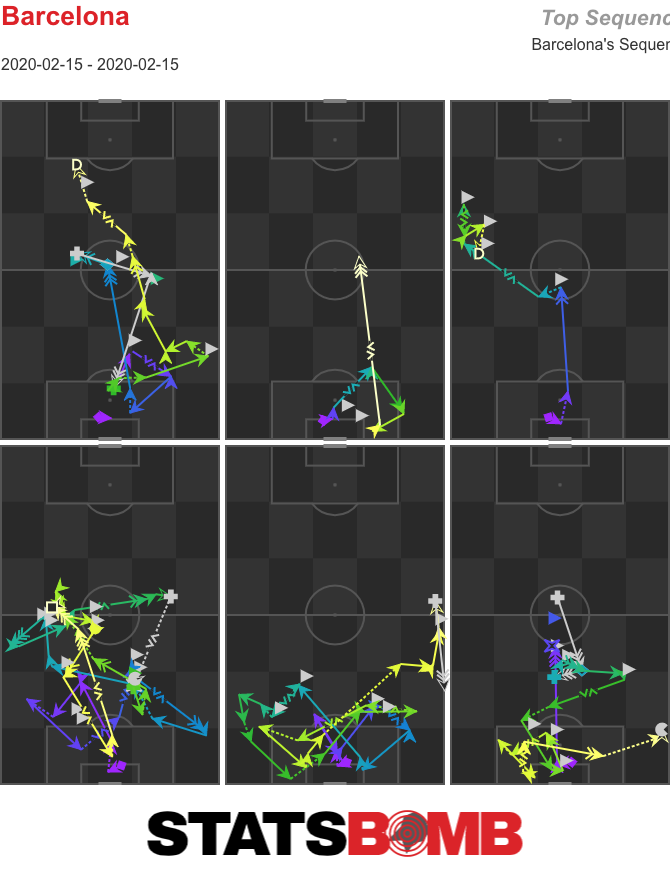
It was a strange sight, a reversal of the usual order. But when your goalkeeper is as good a passer as ter Stegen, perhaps the play makes sense. It removes a pass from the normal pattern of goalkeeper to defender, defender back to goalkeeper, followed by the goalkeeper’s pass forward, and gives him more time to receive and assess his options before opposition pressure arrives.
It wasn’t the first time Barcelona have performed that routine since Quique Setién took charge. They also did so five times against Levante. It is, though, something unique to them. Across the top five European leagues this season, 49 goal kicks have been taken by outfield players; only Barcelona’s have had a goalkeeper as the recipient.
Elsewhere at the Camp Nou, Lionel Messi is on a four-match scoreless streak in the league — his longest in over six years. It’s probably nothing to worry about — he’s provided six assists in that time and is still getting himself into scoring positions on a regular basis.
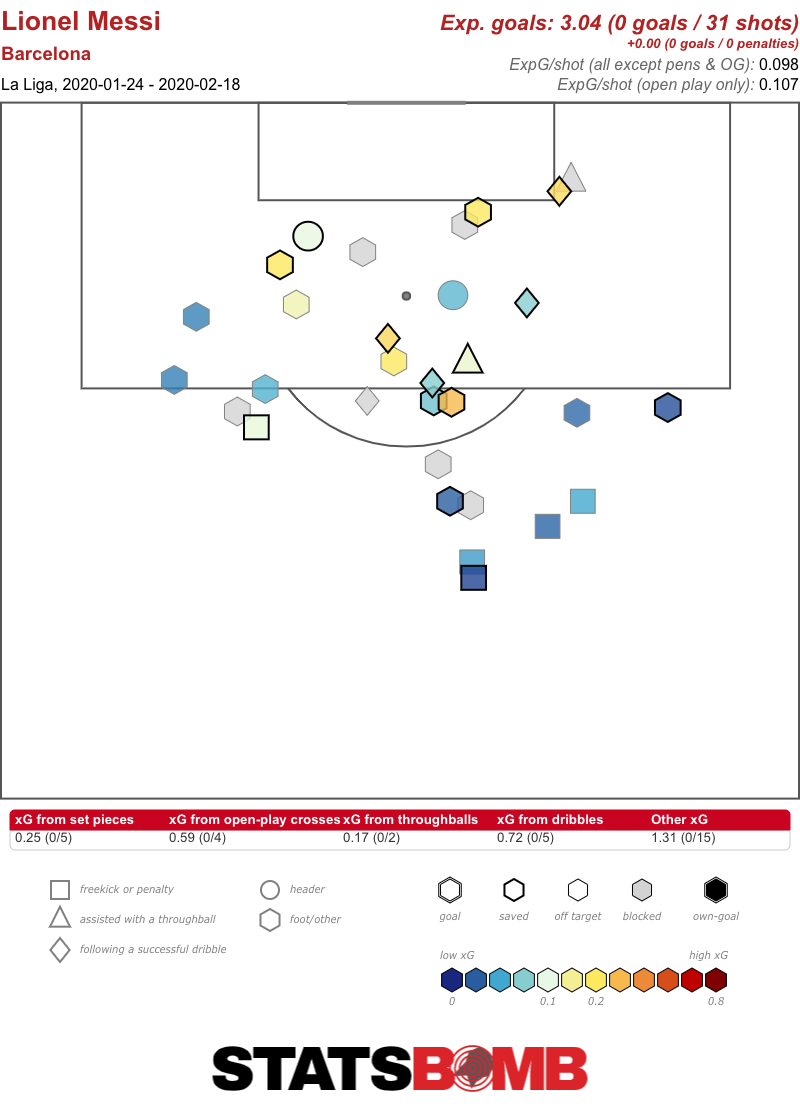
It just looks like one of those runs every player goes through from time to time. Even Messi.
Header image courtesy of the Press Association
